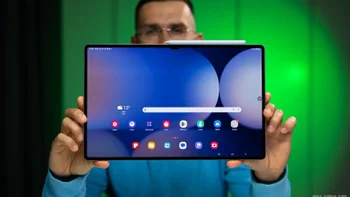Nokia comes back in the gadget game with an awesome $60,000 VR camera

Nokia keeps its distance from the consumer electronics market, but occasionally dabbles in it to some surprising, and arguably interesting results. After the powerful, low-cost Android tablet that was the N1, the Finns return to the gadget game with an uber-professional, $60,000 virtual reality camera. It's a sleek, gray, sphere with eight lenses inside it that has a somewhat ominous presence – although certainly not as aggressive as its price tag. According to Nokia, the $60,000 sticker price means that the OZO is to be sold or rented to film-making professionals, though the company plans to introduce cheaper hobbyist versions.
According to Gartner analyst Brian Blau, more than one million virtual and augmented reality headsets will be sold this year, although it could take up to 10 years for the technology to reach a state of ubiquity. This will be largely thanks to forward-looking products like the OZO, HTC's gaming-oriented Vive, and Samsung's heavily marketed Gear VR. Although they have a limited audience now, they will become a gateway for smaller, but innovative and disruptive players to take their turn into popularizing the medium.

source: Nokia via WSJ
Nokia wants its consumer technology and telecommunications businesses to go hand-in-hand once again.
Why so many lenses, though? Well, to film virtual-reality video with today's available technology, a filmmaker typically has to rig a number of cameras pointing their lenses in different directions. The OZO is designed to do that right out of the box, with all the cameras and microphones contained within a single device. The cam is still something of a work in progress, though. Nokia’s software is still learning how to seamlessly stitch together the separate video streams from different lenses in the scenario of live VR broadcasts. But the problem should reach a resolution by the end of the year, via a software update. Regardless, Nokia is happy to have an early entry into the virtual reality camera market, and believes OZO's launch is a milestone in its ambition to make the revitalized consumer hardware division complement its ongoing business with telecommunications equipment.
source: Nokia via WSJ
Follow us on Google News










Things that are NOT allowed:
To help keep our community safe and free from spam, we apply temporary limits to newly created accounts: